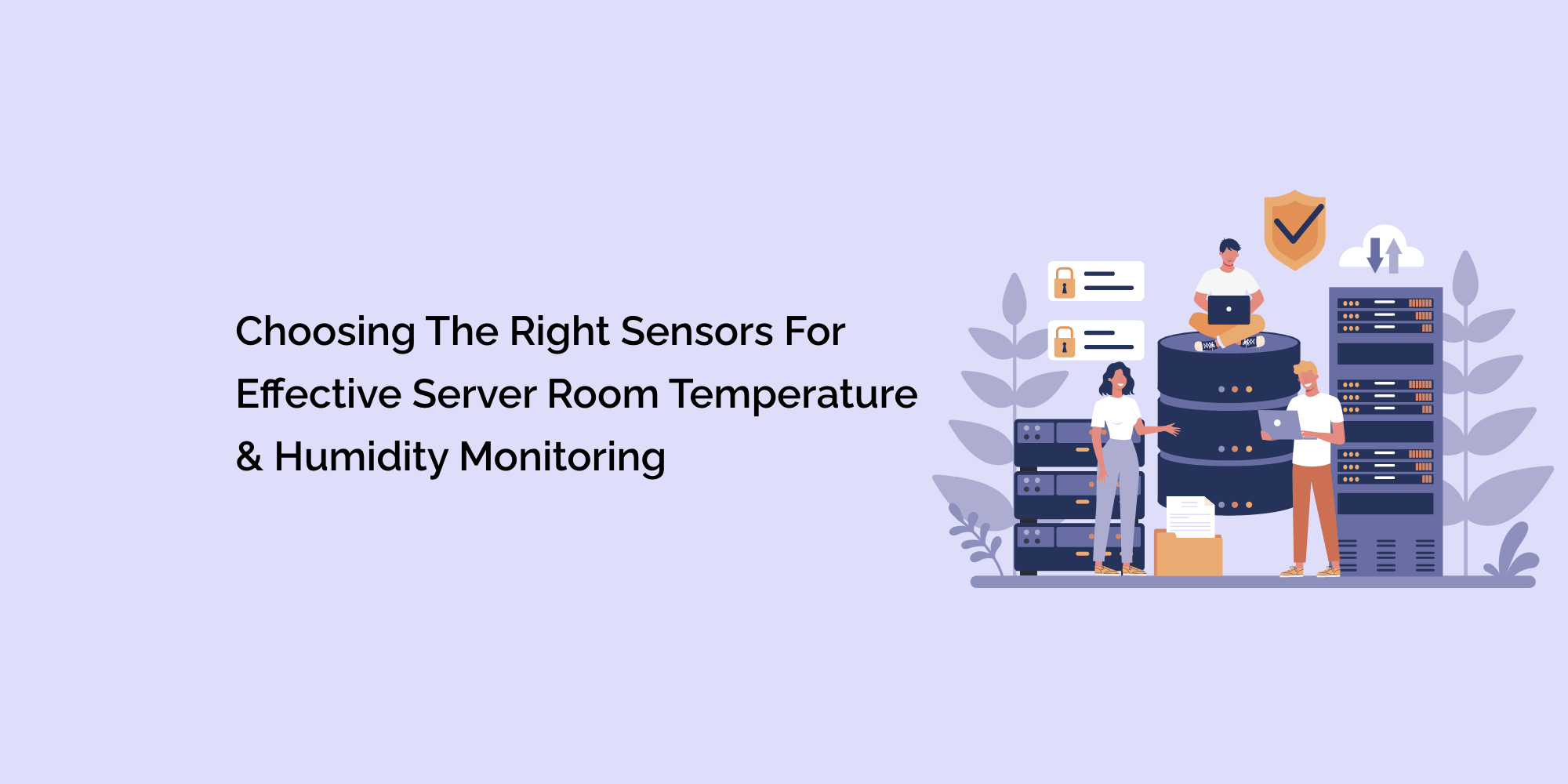Monitoring temperature and humidity in server rooms is crucial for maintaining optimal operating conditions and ensuring the reliable performance of critical equipment. To achieve accurate and effective monitoring, selecting suitable sensors is essential. This comprehensive blog will discuss the key factors to consider when choosing sensors for server room temperature and humidity monitoring. From sensor types and accuracy to installation and connectivity options, understanding these considerations will help you make informed decisions and implement a robust monitoring system. Let's explore the various aspects of choosing suitable sensors to ensure adequate temperature and humidity monitoring in server rooms.
Sensor Types and Technologies
-
Temperature Sensors: Consider different temperature sensor types, including thermocouples, resistance temperature detectors (RTDs), and thermistors. Evaluate their accuracy, response time, and suitability for your server room requirements.
-
Humidity Sensors: Explore humidity sensor options such as capacitive, resistive, or thermal-based sensors. Assess their accuracy, reliability, and sensitivity to variations in humidity levels.
- Combined Temperature and Humidity Sensors: Opt for sensors that provide simultaneous temperature and humidity measurements for comprehensive monitoring. These sensors simplify the installation process and offer a cost-effective solution for monitoring both parameters.
Accuracy and Calibration
-
Sensor Accuracy: Look for sensors with high accuracy levels to ensure precise temperature and humidity readings. Consider sensors with low tolerance and stable performance over time.
-
Calibration Requirements: Determine if the sensors require periodic calibration to maintain accuracy. Sensors that offer self-calibration or come with a calibration certificate provide added confidence in the accuracy of measurements.
- Calibration Standards: Check if the sensors comply with recognized calibration standards such as ISO or NIST. This ensures traceability and supports compliance with industry regulations and quality management systems.
Installation and Placement
-
Sensor Placement: Determine the optimal sensor placement locations in the server room to capture representative measurements. Consider placing sensors near heat-generating equipment, air vents, and potential humidity sources for comprehensive monitoring.
-
Mounting Options: Evaluate the mounting options available for the sensors, such as wall-mounted, duct-mounted, or rack-mounted. Choose the mounting method that best suits your server room layout and accessibility requirements.
- Cable Length and Connectivity: Assess the cable length requirements to ensure the sensors can be easily connected to the monitoring system. Consider wireless sensor options for added flexibility and ease of installation.
Compatibility and Integration
-
Monitoring System Compatibility: Ensure the selected sensors are compatible with your existing or intended monitoring system. Check if they use standard communication protocols such as Modbus, SNMP, or BACnet for seamless integration.
-
Scalability: Consider the scalability of the sensor system to accommodate future expansion or additional monitoring points. This allows you to add sensors as your server room grows or evolves quickly.
- Data Visualization and Alerts: Evaluate the monitoring system's capabilities for data visualization, real-time monitoring, and customizable alerts. Ensure the system provides intuitive dashboards and notifications to respond proactively to temperature and humidity fluctuations.
Certainly! Here are some frequently asked questions (FAQs) related to choosing the suitable sensors for effective server room temperature and humidity monitoring:
Why is choosing suitable sensors for server room temperature and humidity monitoring necessary?
Choosing suitable sensors is crucial for accurate and reliable monitoring of temperature and humidity in server rooms. Proper sensor selection ensures precise measurements, timely detection of deviations, and effective management of environmental conditions to prevent equipment failures, downtime, and data loss.
What are the different types of sensors available for server room temperature and humidity monitoring?
Standard sensors include:
- Temperature sensors (thermocouples, RTDs, and thermistors).
- Humidity sensors (capacitive, resistive, or thermal-based sensors).
- We combined temperature and humidity sensors.
Each type has advantages, accuracy levels, and suitability for specific server room requirements.
How vital is sensor accuracy in temperature and humidity monitoring?
Sensor accuracy is crucial as it directly impacts the reliability of temperature and humidity measurements. High-accuracy sensors provide precise data, ensuring that temperature and humidity levels are maintained within the desired ranges and reducing the risk of equipment damage.
Conclusion
Choosing suitable sensors is critical for effectively monitoring server room temperature and humidity. By considering sensor type, accuracy, calibration, installation, compatibility, and reliability factors, you can implement a robust monitoring system that provides accurate measurements and timely alerts. Investing in high-quality sensors ensures the integrity and performance of critical equipment, reduces the risk of downtime and data loss, and supports energy efficiency efforts. Additionally, selecting sensors that are scalable, easy to integrate, and compatible with monitoring systems simplifies the implementation and management of the monitoring infrastructure. Take the time to evaluate different sensor options and consult with experts to make informed decisions that align with your specific server room requirements.








